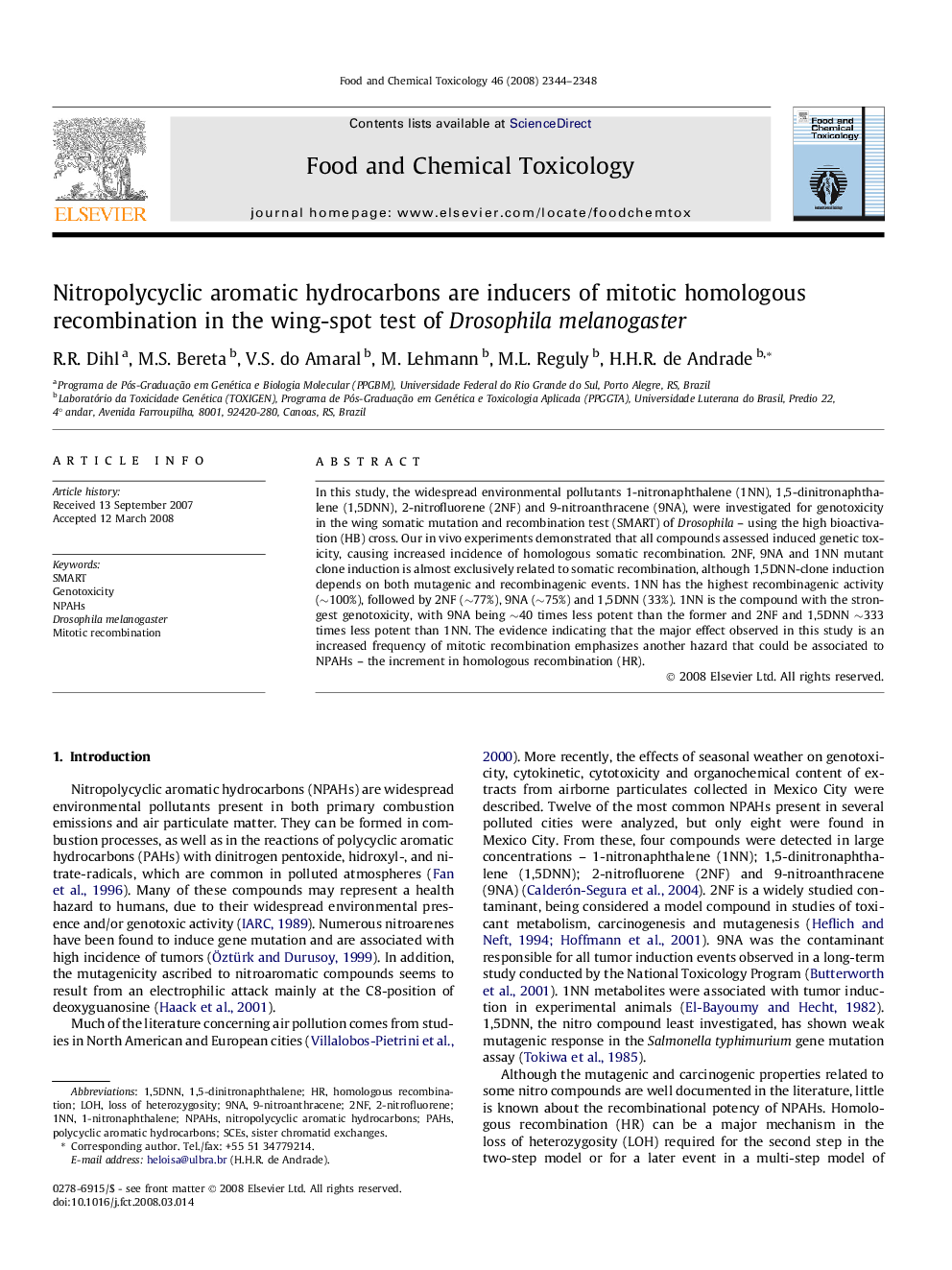| Article ID | Journal | Published Year | Pages | File Type |
|---|---|---|---|---|
| 2586565 | Food and Chemical Toxicology | 2008 | 5 Pages |
In this study, the widespread environmental pollutants 1-nitronaphthalene (1NN), 1,5-dinitronaphthalene (1,5DNN), 2-nitrofluorene (2NF) and 9-nitroanthracene (9NA), were investigated for genotoxicity in the wing somatic mutation and recombination test (SMART) of Drosophila – using the high bioactivation (HB) cross. Our in vivo experiments demonstrated that all compounds assessed induced genetic toxicity, causing increased incidence of homologous somatic recombination. 2NF, 9NA and 1NN mutant clone induction is almost exclusively related to somatic recombination, although 1,5DNN-clone induction depends on both mutagenic and recombinagenic events. 1NN has the highest recombinagenic activity (∼100%), followed by 2NF (∼77%), 9NA (∼75%) and 1,5DNN (33%). 1NN is the compound with the strongest genotoxicity, with 9NA being ∼40 times less potent than the former and 2NF and 1,5DNN ∼333 times less potent than 1NN. The evidence indicating that the major effect observed in this study is an increased frequency of mitotic recombination emphasizes another hazard that could be associated to NPAHs – the increment in homologous recombination (HR).
